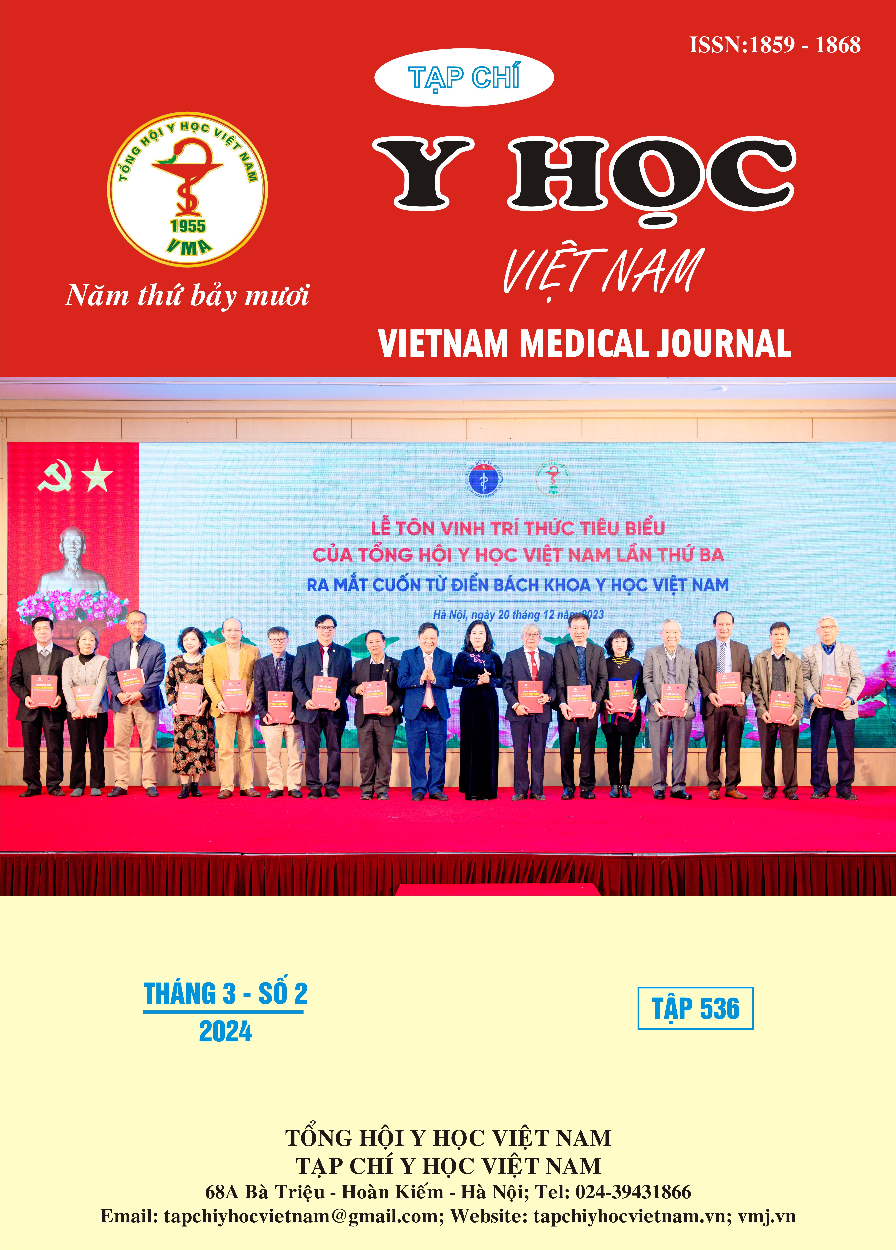CORRELATION BETWEEN TRANSCUTANEOUS PCO2 (PtcCO2) AND PaCO2 IN PATIENTS WITH ACUTE EXACERBATION OF CHRONIC OBSTRUCTIVE PULMONARY DISEASE (COPD)
Main Article Content
Abstract
Objective: To analysis the correlation and aggrement between transcutaneous carbon dioxide (PtcCO2) values and arterial carbon dioxide (PaCO2) in patients with acute exacerbation of chronic obstructive pulmonary disease (COPD). Method: A case series of 30 patients diagnosed with COPD exacerbation based on the GOLD 2022 criteria. These patients were admitted to the Center for Critical Care Medicine at Bach Mai Hospital from November 2022 to August 2022. The study aimed to compare and analyze the correlation between PtcCO2 and PaCO2. Results: Among the 30 eligible patients enrolled in the study with a mean age of 70.3 ± 9.7 years. The main comorbidities observed were hypertension (26.7%) and diabetes mellitus (20.0%). A total of 88 pairs of arterial blood gas samples and PtcCO2 values were recorded. The mean PaCO2 value was 55.8 ± 13.3 mmHg. There was a strong correlation between PtcCO2 and PaCO2 values (R2 = 0.94, p < 0.001), with the mean bias was 3.09 mmHg and an agreement with the limits of agreement were -3.35 to +9.55 mmHg (based on the Bland-Altman plot). The difference between PaCO2 and PtcCO2 values increased in line with PaCO2 severity. Conclusion: There is a good correlation between PtcCO2 and PaCO2 values in patients with acute exacerbation of chronic obstructive pulmonary disease.
Article Details
References
2. Hoàng Thủy, Nguyễn Viết Nhung & Nguyễn Đình Tiến (2022). Đặc điểm khí máu động mạch trong đợt cấp của bệnh phổi tắc nghẽn mạn tính. Tạp Chí Y học Việt Nam, 515(2).
3. Gancel P.-E., Roupie E., Guittet L., et al. (2011). Accuracy of a transcutaneous carbon dioxide pressure monitoring device in emergency room patients with acute respiratory failure. Intensive Care Med, 37(2), 348-351.
4. Storre J.H., Magnet F.S., Dreher M., et al. (2011). Transcutaneous monitoring as a replacement for arterial PCO2 monitoring during nocturnal non-invasive ventilation. Respiratory Medicine, 105(1), 143–150.
5. Storre J.H., Steurer B., Kabitz H.-J., et al. (2007). Transcutaneous PCO2 Monitoring During Initiation of Noninvasive Ventilation. Chest, 132(6), 1810–1816.
6. McVicar J. and Eager R. (2009). Validation study of a transcutaneous carbon dioxide monitor in patients in the emergency department. Emergency Medicine Journal, 26(5), 344–346.
7. Ruiz Y., Farrero E., Córdoba A., et al. (2016). Transcutaneous Carbon Dioxide Monitoring in Subjects With Acute Respiratory Failure and Severe Hypercapnia. Respir Care, 61(4), 428–433.
8. Kelly A.-M. and Klim S. (2011). Agreement between arterial and transcutaneous PCO2 in patients undergoing non-invasive ventilation. Respiratory Medicine, 105(2), 226–229.
9. Rodriguez P., Lellouche F., Aboab J., et al. (2006). Transcutaneous arterial carbon dioxide pressure monitoring in critically ill adult patients. Intensive Care Med, 32(2), 309–312.


